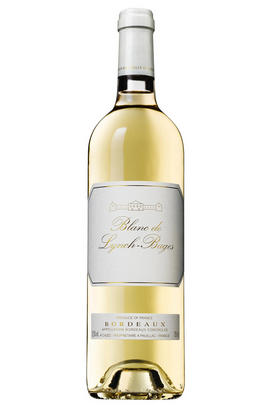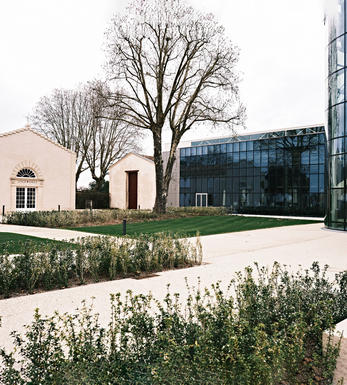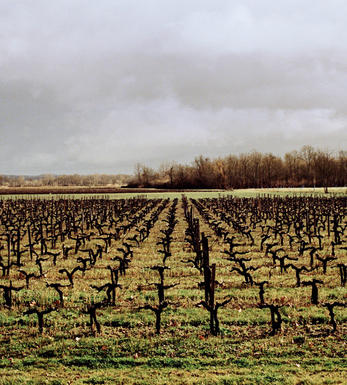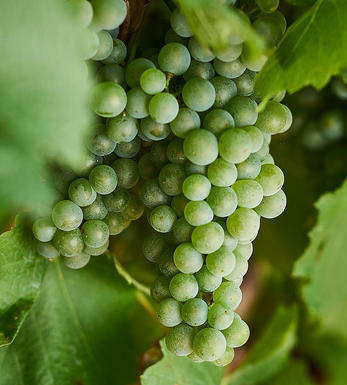
2022 Blanc de Lynch-Bages, Bordeaux

Critics reviews
The 2022 Echo de Lynch-Bages has a fresh, quite leesy bouquet with touches of gooseberry and lime flower. The 50% new oak is neatly integrated. The palate is well balanced with crisp acidity, taut and fresh, fine salinity with a dab of stem ginger on the finish. Fine.
Drink 2024 - 2032
Neal Martin, Vinous.com (April 2023)
The 2022 Blanc de Lynch-Bages is bright and nicely focused, with tons of Sauvignon Blanc aromas and flavours driving the blend. Citrus, white flowers, mint, chalk and tomato leaf are delineated nicely. The 2022 has just been bottled, but its freshness is notable.
Drink 2023 - 2037
Antonio Galloni, Vinous.com (April 2023)
A bright and vivid white with sliced lemon, grapefruit and mineral character. Medium to full body. Crisp acidity and a minerally finish. Lots of energy this year despite the hot and dry growing season. 67% sauvignon blanc, 22% semillon and 11% muscadelle.
Drinking beautifully already.
James Suckling, JamesSuckling.com (April 2023)
Peach, apricot, pear and green apple combine with sweet tropical fruit touches, lending freshness and a rich, gourmet aspect to this wine. Succulent and energetic - a nice balance between opulence and liveliness. Still on the serious side but with subtle minerality and enjoyable florality.
3.20pH. Ageing six months, 50% new oak. The first time all the grapes were harvested in August (25-31). 3.2pH. 4.3 g/L total acidity. Aged six months in barrels on lees (50% new oak).
Drink 2023 - 2030
Georgina Hindle, Decanter.com (April 2023)
While the 2022 Château Lynch Bages Blanc had been bottled just before my visit, it wasn’t showing any worse for wear and has a terrific perfume of honeyed lime, white flowers, citrus, and chalky minerality. Based on 67% Sauvignon, 22% Sémillon, and 11% Muscadelle, it stays fresh, vibrant, medium-bodied, and refreshing on the palate.
Jeb Dunnuck, JebDunnuck.com (May 2023)
About this WINE

Chateau Lynch-Bages
Château Lynch Bages, a 5ème Cru Classé, is one of the best-known Médoc estates and has always had a particularly strong following on this side of the English Channel. Since 1973 it has been owned by the enigmatic Jean-Michel Cazes and is now run by his son, Jean-Charles.
Lynch Bages's vineyards are superbly sited on a plateau west of Pauillac town, in the small village of Bages. The 90 hectares of vineyards (Red: Cabernet Sauvignon 75%, Merlot 15%, Cabernet Franc 10%) lie on deep gravel beds over limestone. For the reds, fermentation is temperature-controlled with extensive 'remontage' to ensure concentration and depth of colour. A special system of pipes transfers the wine from the cuves to the oak barriques (60% new) where it matures for 15 months.
Lynch Bages can be surprisingly soft and approachable when young. However, when fully mature, it develops a succulent richness and a heavenly bouquet of minty blackcurrants and cigar boxes. As Oz Clarke says "Lynch Bages is impressive at five years, beautiful at ten years and irresistible at twenty."

Bordeaux
Bordeaux remains the centre of the fine wine world. The maritime climate on the 45th parallel provides for temperate winters and long, warm summers, perfect conditions for growing grapes suited to the production of classically-constructed, long-lasting wines. This vast region of 120,000ha of vineyards (four times the size of Burgundy) is home to 10,000 wine producers and 57 different AOCs. Red now makes up 88 percent of Bordeaux wine, and is usually referred to as Claret. The origin of this name was to differentiate the lighter-coloured wines of the coastal region from the deeper "black" wines from up-country regions.
The Left Bank, comprising the wine regions of the Médoc, Pessac-Léognan and Graves are planted predominantly with Cabernet Sauvignon, which thrives on the gravelly soils left by the ancient course of the river. This is a thick-skinned variety which ripens late, producing powerful, tannic wines capable of long ageing. It is blended with Merlot, Cabernet Franc and sometimes Petit Verdot. The highlights of the Médoc are the four communes of St- Estèphe (blackcurrant concentration); classical, cedarwood and cigar-box Pauillac; richly-fruited St Julien; and elegant, fragrant Margaux.
On the Right Bank, most famously in St-Emilion and Pomerol, it is the fleshy Merlot grape which prevails, sometimes supported by Cabernet Franc. Here the soils are more mixed, with gravel and clay underpinning the rich, fruity wines of Pomerol. Styles vary more in St-Emilion, depending on the predominance of sand in the lower-lying slopes, or limestone on the hillsides and plateau.
By the 18th century, individual properties - known as châteaux, however humble - were becoming known for the quality of their wines and in 1855, those of the Médoc (plus Haut-Brion, a property commended by Samuel Pepys as early as 1663) were classified into five levels of classed growths. Lafite, Latour, Margaux and Haut Brion were cited as First Growths, to whose ranks Mouton Rothschild was elevated by presidential decree in 1973. Beneath the ranks of the classed growths lies a raft of fine châteaux known as Crus Bourgeois, while a host of less well-known "petits châteaux" still makes attractive, enjoyable Claret at affordable prices.
The other jewel in the Bordeaux crown is the district of Sauternes, making some of the most outstanding sweet white wines in the world (from the likes of Châteaux d'Yquem, Rieussec and Climens). The foggy autumn mornings along the banks of the Garonne River near Sauternes and neighbouring Barsac enable the noble rot, botrytis cinerea, to form on the skins of the grapes, which can still ripen in the afternoon sun as late as the end of October or early November. The Sémillon grape is the prime component, but Sauvignon Blanc and a little Muscadelle are also planted to provide insurance if the weather is less favourable to Sémillon, as well as offering a counterpoint in flavour.
There are many inexpensive dry white wines - more Sauvignon than Sémillon - from regions such as Entre-Deux-Mers and Graves, with just a handful of outstanding properties located in Pessac-Léognan. The most famous of the great dry whites hail from Châteaux Haut Brion, Laville Haut Brion and Domaine de Chevalier.
The finer wines of Bordeaux are sold en primeur in the late spring following the harvest, some two years before the wines are ready for physical delivery. The châteaux offer their wines through a system of Bordeaux négociants (brokers) who sell them on to importers round the world. Prices vary enormously from one vintage to another, dependent on perceived quality and world demand, which shows no signs of diminishing, especially for the great years.

Sauvignon Blanc & Sémillon
The blend used for White Graves and Sauternes and rarely encountered outside France. In the great dry whites of Graves, Sauvignon Blanc tends to predominate in the blend, although properties such as Smith Haut Lafite use 100% Sauvignon Blanc while others such as Laville Haut Brion have as much as 60% Sémillon in their final blends. Sauvignon Blanc wines can lose their freshness and fruit after a couple of years in bottle - if blended with Sémillon, then the latter bolsters the wine when the initial fruit from the Sauvignon fades. Ultimately Sauvignon Blanc gives the wine its aroma and raciness while Sémillon gives it backbone and longevity.
In Sauternes, Sémillon is dominant, with Sauvignon Blanc playing a supporting role - it is generally harvested about 10 days before Sémillon and the botrytis concentrates its sweetness and dampens Sauvignon Blanc`s naturally pungent aroma. It contributes acidity, zip and freshness to Sauternes and is an important component of the blend.


Buying options
Add to wishlist
Description
The contribution of Muscadelle to this wine is unusually important. The Muscadelle vines are quite old, planted in 1988. This year’s weather conditions have given the fruit aromas of grape and elderflower instead of the peapod note it can sometimes deliver.
The wine is not especially mineral but has plenty of energy, if not the citrus edge of 2021. It is a wine for drinking early, with a fleshier and more exotic profile than usual. It was fermented and aged in barrel; with the new cellar facilitating temperature control for each individual barrel, the wine is well-composed and immediately attractive.
Sauvignon Blanc 67%; Sémillon 22%; Muscadelle 11%
Drink 2023 - 2029
Score: 17/20
Berry Bros. & Rudd (April 2023)
wine at a glance
Delivery and quality guarantee